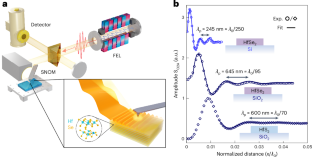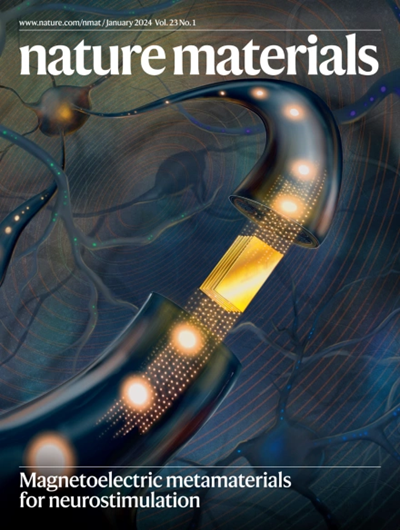被限制在纳米尺度的太赫兹光与二硫化物铪
IF 38.5
1区 材料科学
Q1 CHEMISTRY, PHYSICAL
引用次数: 0
摘要
太赫兹技术有可能突破未来光电应用的速度限制,但太赫兹光的大自由空间波长阻碍了纳米级器件的实现。现在,利用基于铪的范德华晶体中的声子极化子证明了太赫兹光在纳米尺度上的限制。本文章由计算机程序翻译,如有差异,请以英文原文为准。

Terahertz light confined to the nanoscale with hafnium dichalcogenides
Terahertz technology has the potential to push the speed limit of future opto-electronic applications, but the large free-space wavelength of terahertz light hinders nanoscale device implementation. Now, the confinement of terahertz light to the nanometre scale is demonstrated using phonon polaritons in hafnium-based van der Waals crystals.
求助全文
通过发布文献求助,成功后即可免费获取论文全文。
去求助
来源期刊

Nature Materials
工程技术-材料科学:综合
CiteScore
62.20
自引率
0.70%
发文量
221
审稿时长
3.2 months
期刊介绍:
Nature Materials is a monthly multi-disciplinary journal aimed at bringing together cutting-edge research across the entire spectrum of materials science and engineering. It covers all applied and fundamental aspects of the synthesis/processing, structure/composition, properties, and performance of materials. The journal recognizes that materials research has an increasing impact on classical disciplines such as physics, chemistry, and biology.
Additionally, Nature Materials provides a forum for the development of a common identity among materials scientists and encourages interdisciplinary collaboration. It takes an integrated and balanced approach to all areas of materials research, fostering the exchange of ideas between scientists involved in different disciplines.
Nature Materials is an invaluable resource for scientists in academia and industry who are active in discovering and developing materials and materials-related concepts. It offers engaging and informative papers of exceptional significance and quality, with the aim of influencing the development of society in the future.
 求助内容:
求助内容: 应助结果提醒方式:
应助结果提醒方式:


